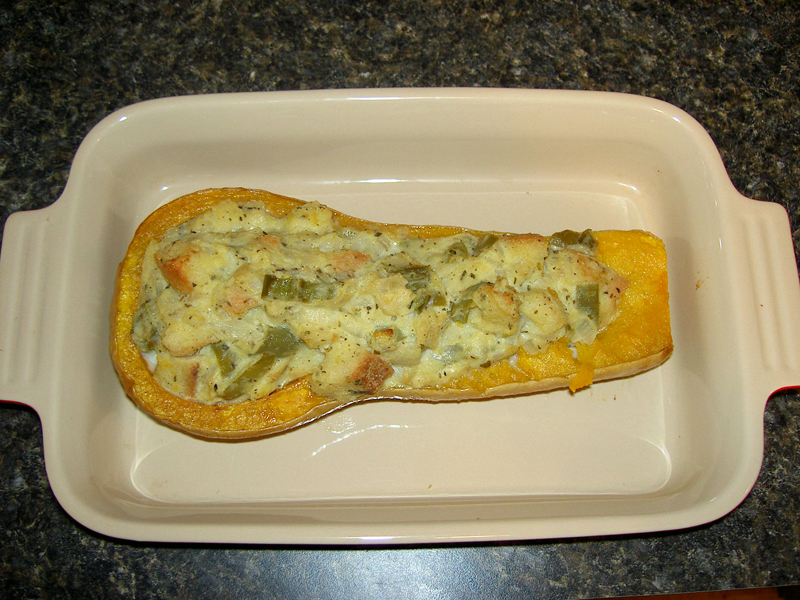
Dinner, day two.
Last week I made stuffed squash for the first time. It’s not the kind of thing that I ate much of growing up, nor is it the sort of thing I would order in a restaurant. But it appeared to be one of the few ways to actually eat a squash as a meal, so I thought I’d give it a try.
We’d received two butternut squash as part of our summer farm subscription, and I’d let them cure on the sideboard the recommended 10 days or so. I lacked a meatless recipe for stuffed squash in my own cookbooks, so I based my efforts on a recipe from a woman who is also adapting her cooking to lower cholesterol. And, the photo looked tasty.
For my version, I sautéed about half a head of garlic, three onions, three ancho peppers from our farm subscription, and three little yellow-green apples I had kicking around in the crisper. Spice-wise, I used a bit of dried sage, dried thyme, and salt and pepper. When that had cooked down to a nice thick goop, I mixed in a few slices of stale rosemary potato bread from the farmers’ market, chopped into cubes, and one egg’s worth of EggBeaters. To prepare the squash (which I’d already coated in olive oil and baked at 350F for about 40 minutes), I scooped out a bit of the middle to create a longer cavity. I then heaped the filling in, using it all on the two halves as the squash was large, and baked it for about another 40 minutes.
The result was, I have to say, underwhelming. It looked decent, and it was cooked all the way through, but it never really browned up, making us think we probably could have cooked it longer and/or at higher heat. The flavor was also very bland; it could have used fresh herbs, including rosemary, in much greater quantities. Finally, both of us had a mental challenge with regard to our expectations. I imagined only the savory Christmas stuffing of my youth, to which this stuffing definitely did not compare favorably despite its highbrow ingredients. My partner had a similarly difficult time getting over the conception of squash as a side dish, and kept looking around on his plate for the meat. Expecting that the squash would be quite filling, I had only prepared potatoes on the side; a green salad probably would have rounded out the meal more. Of course, when you’re eating vegetables stuffed with vegetables and a side of vegetables, a few more here and there probably don’t notably change your experience.
If we decide to try this again with our other squash, I’ll try a few different things. One, I’ll cook down the filling so that it has less water. Two, I’ll cook it at higher heat. Lastly and most importantly, I’ll add a whole bunch more savory stuff.
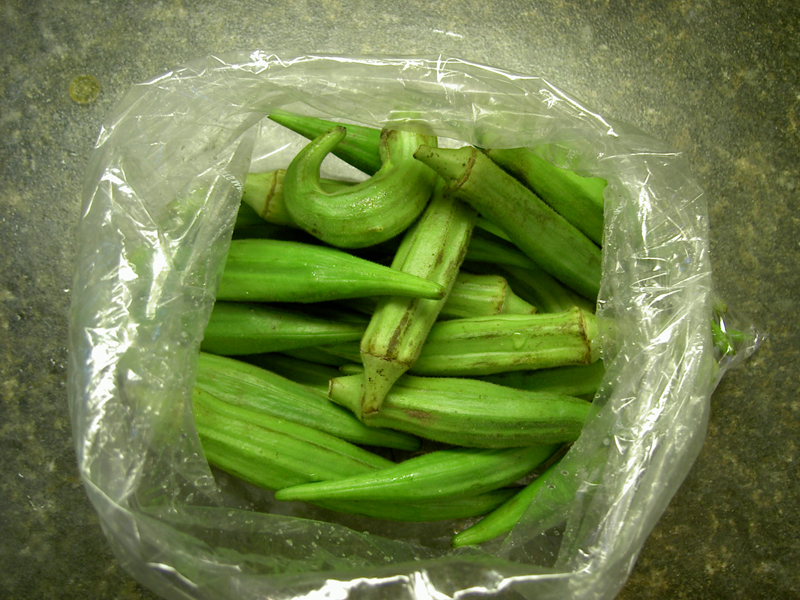

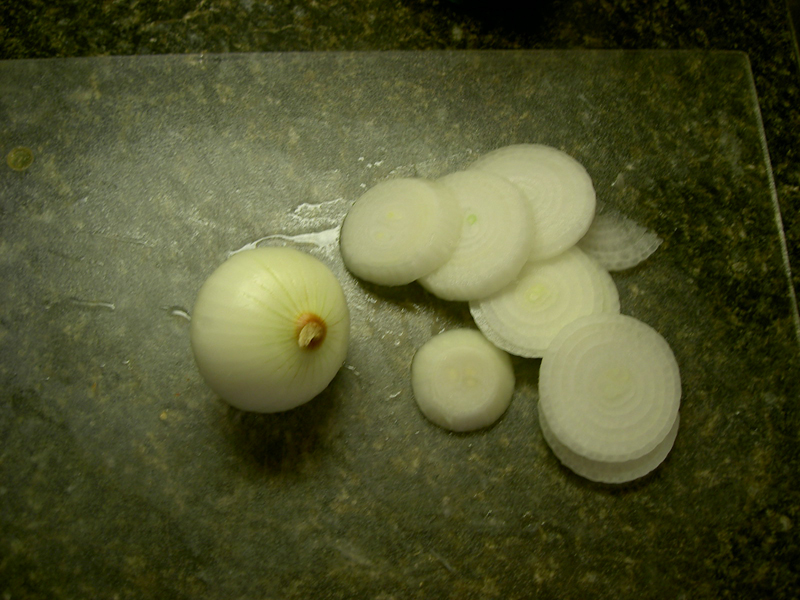
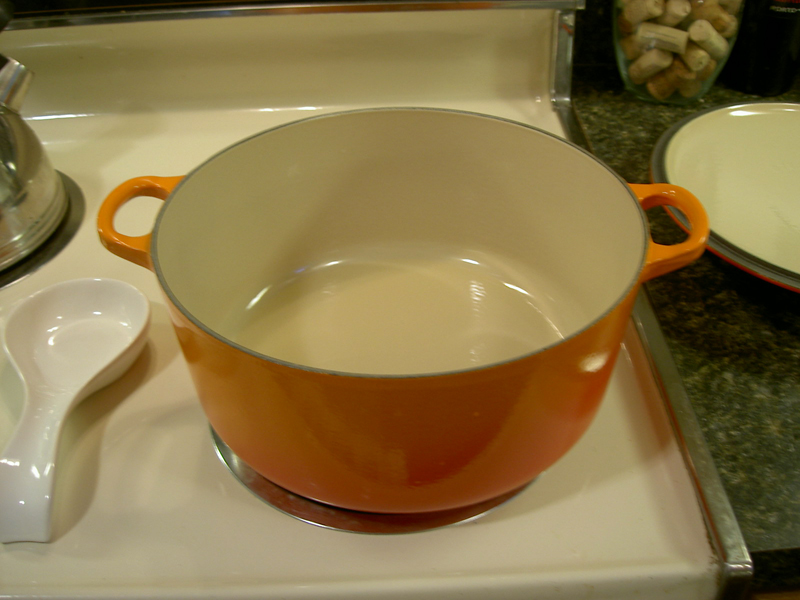
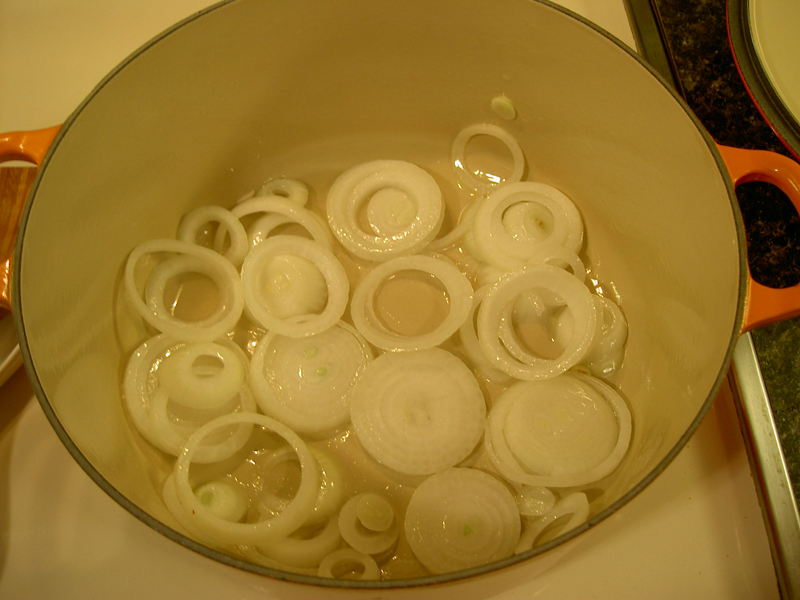

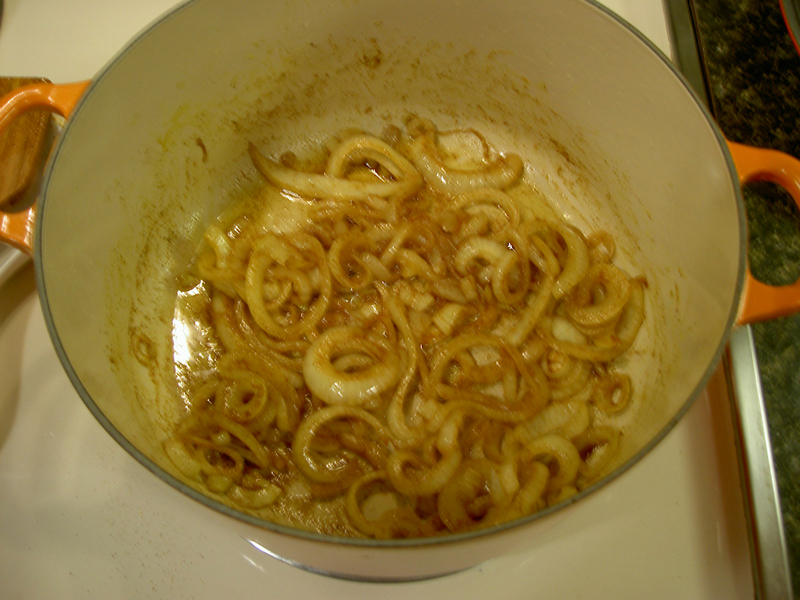
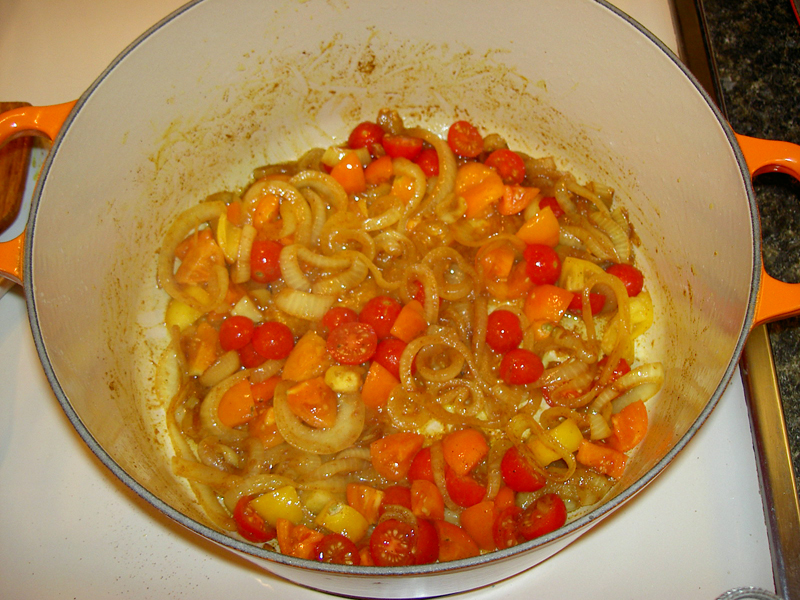
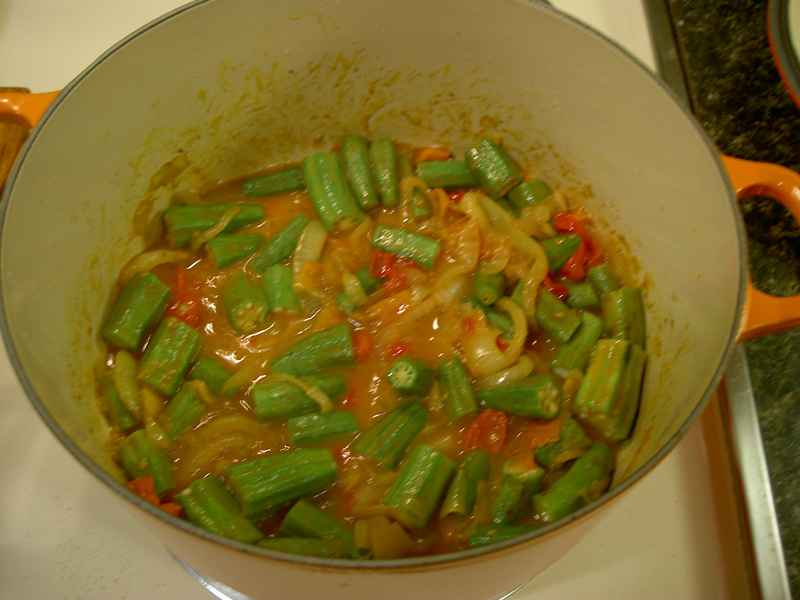
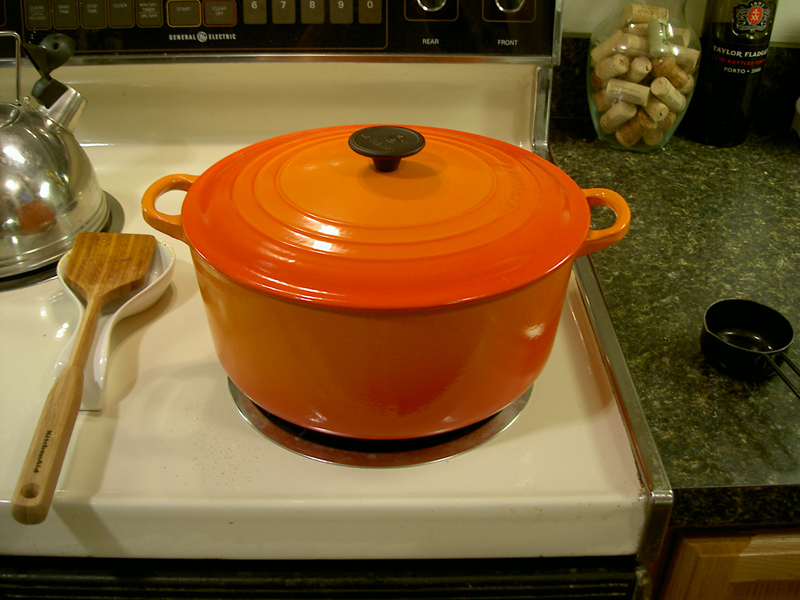 Everything steaming.
Everything steaming.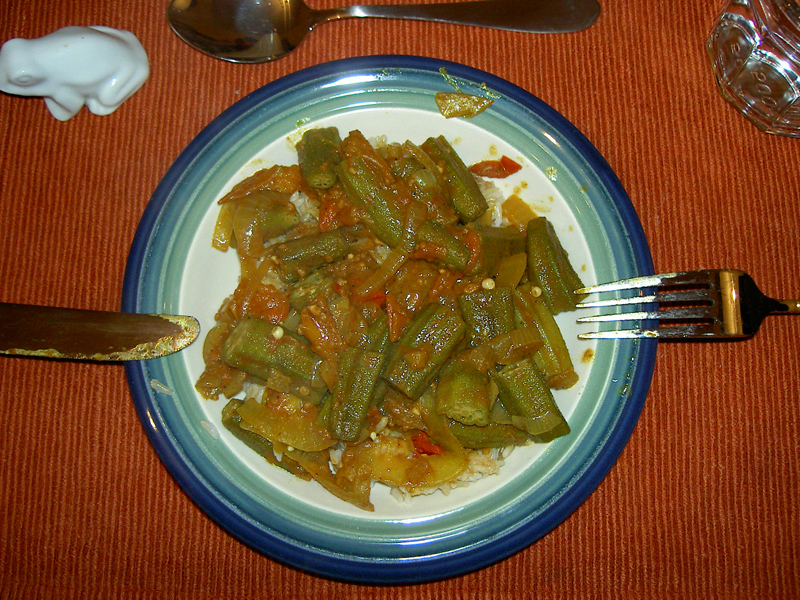 Dinner.
Dinner.